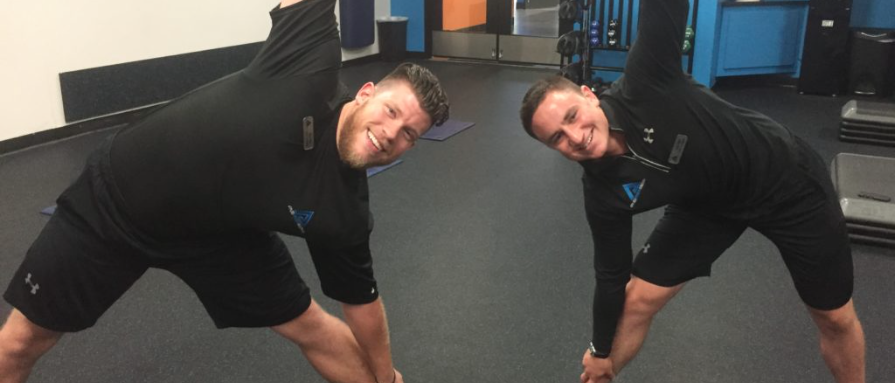Stretch. You know you should.
Static Stretching
When to Do It
Post exercise to improve joint range of motion.
How Long
At least 1 stretch per muscle group held for approximately 20-30 seconds.
How Often
3-5x per week
When Not to Do It
When you are not adequately warmed up.
Before sports that require explosiveness. Some research shows a decrease in power production while others show no change. It is probably better to border on the safe side and do a dynamic warmup
Dynamic Stretching
When to Do It:
Before an activity that requires explosive movements.
How Long:
20-30 seconds per movement. 1-2 rounds of each movement. Make sure you are going through a full range of motion.
How Often:
Prior to activities that require explosive movements.
When Not to Do It:
Currently there are no contraindications to dynamic stretching.
More Research is Needed!
In the past 15 years, much of the research that has come out on stretching supports the recommendations above, however there have been a few conflicting studies that suggest we probably have more research to do before the protocol for the “perfect” stretching routine is set in stone. For now, what you see above can only benefit you and won’t set you back in your training 🙂
Thanks for reading!
Jared Freeman
About the Author:
-

Michael Stack is the founder & CEO of Applied Fitness Solutions and Frontline Fitness Pros. He is a faculty lecturer for the University of Michigan’s School of Kinesiology. He is also the creator and the host of the Wellness Paradox Podcast, produced in conjunction with University of Michigan.
Michael is an exercise physiologist by training and a health entrepreneur, health educator, and fitness industry advocate by trade. He is dedicated to enhancing the standard of practice of, and advocating for, fitness and wellness professionals to ensure they become an essential constituent in the healthcare delivery system.
With a career spanning over three decades in fitness, health, and wellness Michael has a deep knowledge of exercise physiology, health/wellness coaching, lifestyle interventions to mitigate chronic disease and leadership. He is credentialed through the American College of Sports Medicine (ACSM) as an Exercise Physiologist (ACSM-EP), Exercise is Medicine practitioner (ASCM-EIM), and a Physical Activity in Public Health Specialist (ACSM-PAPHS). Michael is a National Strength & Conditioning Association (NSCA) Certified Strength & Conditioning Specialist (CSCS), and a CDC Diabetes Prevention Program (DPP) Lifestyle Coach.
Michael received his undergraduate degree from the University of Michigan’s School of Kinesiology in 2004 and is currently a Master’s of Public Health (MPH) candidate at University of Michigan, with a specific concentration in health behavior and health education.
Michael is a board of directors’ member for the Physical Activity Alliance and Michigan Fitness Clubs Association. He sits on the University of Michigan’s School of Kinesiology Alumni Board of Governors. Michael is an expert curriculum reviewer for the American College of Lifestyle Medicine. Finally, he is a member of the executive leadership team for American Heart Association’s Heart Walk.
Michael lectures nationally for several health/fitness certification and continuing educations, including; IHRSA, the Medical Fitness Association, the National Strength & Conditioning Association, and SCW Fitness.

